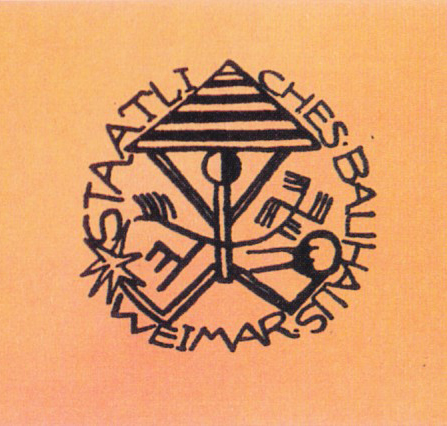Design for the Bauhaus Signet (Star Manikin)
Karl Peter Röhl, 1919
In the Bauhaus-Signet (Bauhaus logo) used from 1919 to 1921, Röhl combines elements of the expressionist reception of the Gothic style with Asian and Germanic symbols.

Text
As such, the head of the "Sternenmännchen" (star mannikin) is based on a variation of the Chinese 'yin and yang' symbol, while its body refers to the Germanic 'tree of life' rune. Both symbols epitomise the connection of the male/female principle. Another dualistic relationship exists between the feathered form on the left and the swastika on the right: here, the symbols for calmness' and 'movement' face one another. The pyramid being lifted up by the Sternenmännchen represents the arts that are united in the 'grand building'. Moreover, the figure appears to be equipped with a key that brings to mind the key of the medieval masons’ guild. The sun and star locate the 'Homo caelestis' in the universe, the perfection of which is depicted by the circle that confines the signet.
[AG 2015]
- Literature:
- Hofstaetter, Constanze (2007): Karl Peter Röhl and Modernity. In Search of the ‘New Human Being.' Between Post-War Expressionism, Early Bauhaus and International Constructivism. (Studies on the History of International Architecture and Art), Petersberg.